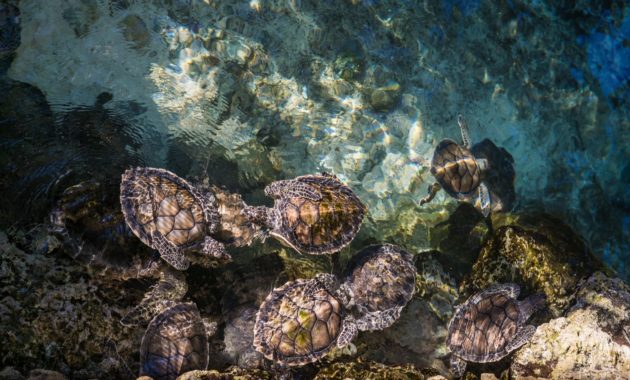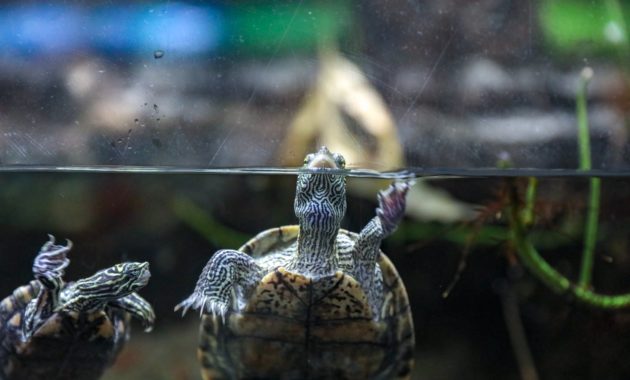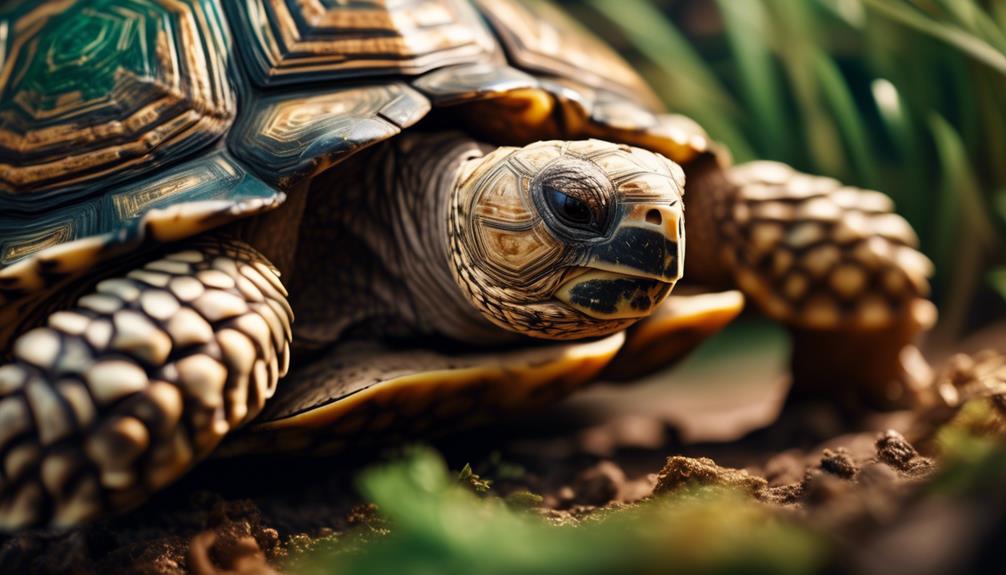
They say that good things come in small packages, and when it comes to the mysterious Greek Tortoise, this adage couldn't be more true. With its petite size and enigmatic presence, this creature has captivated the curiosity of many.
But what secrets lie behind its highly domed carapace and single-hinged plastron? Step into the world of the Greek Tortoise and prepare to be astonished as we unravel the mysteries that surround this small wonder.
From its diverse habitats to its striking color variations, there is much to discover about this enchanting reptile. So, grab your magnifying glass and join us on this journey of exploration as we uncover the magic that lies within the tiny, scaly frame of the Greek Tortoise.
Key Takeaways
- Greek tortoises have unique physical characteristics, such as a small size, domed carapace, and spurs on their thighs.
- They are native to diverse habitats in various regions, including Turkey, the Middle East, and North Africa, with color variations in their carapace, limbs, and head.
- Creating an ideal environment for Greek tortoises involves maintaining specific temperature ranges and providing outdoor or indoor enclosures with suitable vegetation and lighting.
- Their diet consists of herbivorous foods, including weeds, dark leafy greens, natural hays, grasses, and occasional fruit, supplemented with calcium and access to shallow water for hydration.
Physical Characteristics of Greek Tortoises
Greek Tortoises are known for their small size, highly domed carapace, and unique physical features such as a single-hinged plastron and spurs on their thighs. These tortoises have a compact build, with the adults usually measuring between 6 to 8 inches in length. Their carapace, or shell, is highly domed, which helps protect their internal organs.
Another interesting feature is the single-hinged plastron, which allows the tortoise to retract its head and limbs completely into its shell for protection. Additionally, Greek Tortoises have one to three spurs on each thigh, which are used for digging and climbing.
These physical characteristics make Greek Tortoises stand out among other tortoise species and contribute to their overall uniqueness.
Native Habitat of Greek Tortoises
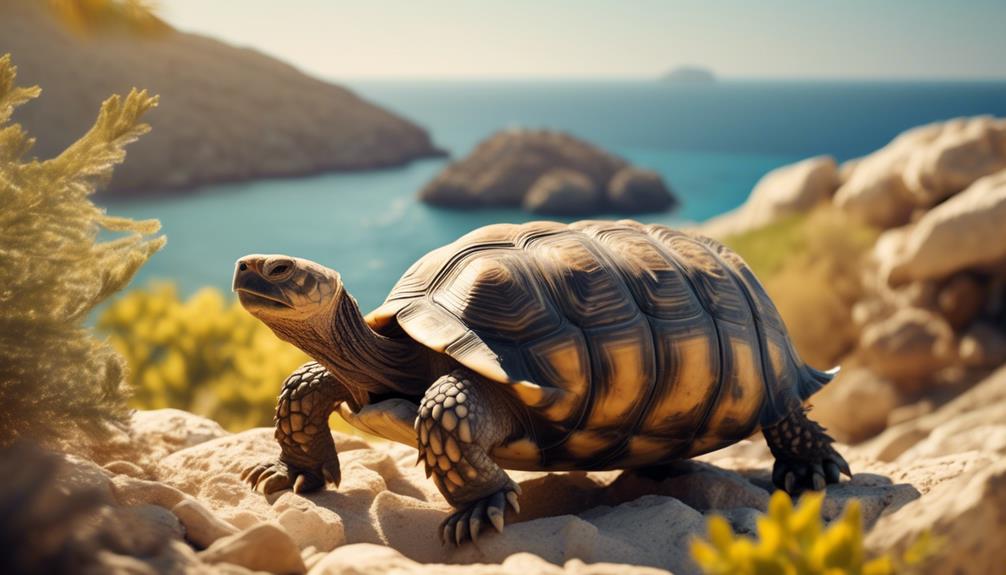
As we shift our focus to the native habitat of these unique tortoises, it's important to understand the diverse environments in which they thrive. Greek tortoises can be found in a variety of habitats, including grasslands, rocky hillsides, forests, Mediterranean scrubland, meadows, fields, semi-desert environments, and coastal dunes. They've a wide range that includes Turkey, the Middle East, Sardinia, southern Spain, southwest Asia, and North Africa.
These tortoises exhibit a range of colors, with their carapace varying from tan or yellow with dark brown or black blotching to completely black or gray. The plastron can be greenish-yellow to yellow, or gray or brown with black or dark brown markings. Their limbs, tail, and neck are typically gray to yellowish-brown, while the head can be brown to yellow, or even black or gray with dark spotting.
To create a suitable environment for Greek tortoises, it's essential to provide a minimum temperature of 80°F for southern Greek tortoises, a basking area temperature of 95-100°F, and a temperature range of 75-90°F for northern Greek tortoises to allow hibernation. Outdoor enclosures should include plants and edible vegetation, while indoor enclosures should have a tortoise table and UVA/UVB light.
Greek tortoises have a herbivorous diet consisting of weeds, dark leafy greens, natural hays and grasses, and occasional fruit. They may also be given commercial tortoise food in moderation, along with a calcium supplement like cuttlebone. A shallow water dish should be provided for soaking and drinking, as hydration is crucial, especially for tortoises from arid environments.
Color Variations in Greek Tortoises

Color variations in Greek tortoises range from tan or yellow with dark brown or black blotching on the carapace to completely black or gray. These variations in color can be observed on different parts of the tortoise's body.
The carapace, which is the upper shell, can have a combination of tan or yellow base color with dark brown or black blotches. On the other hand, the plastron, which is the lower shell, may appear greenish-yellow to yellow, or gray or brown with black or dark brown markings.
The limbs, tail, and neck of Greek tortoises can range from gray to yellowish-brown. The head can also vary in color, from brown to yellow, but it can also be black or gray with dark spotting.
These color variations contribute to the unique and fascinating appearance of Greek tortoises.
Ideal Environment for Greek Tortoises
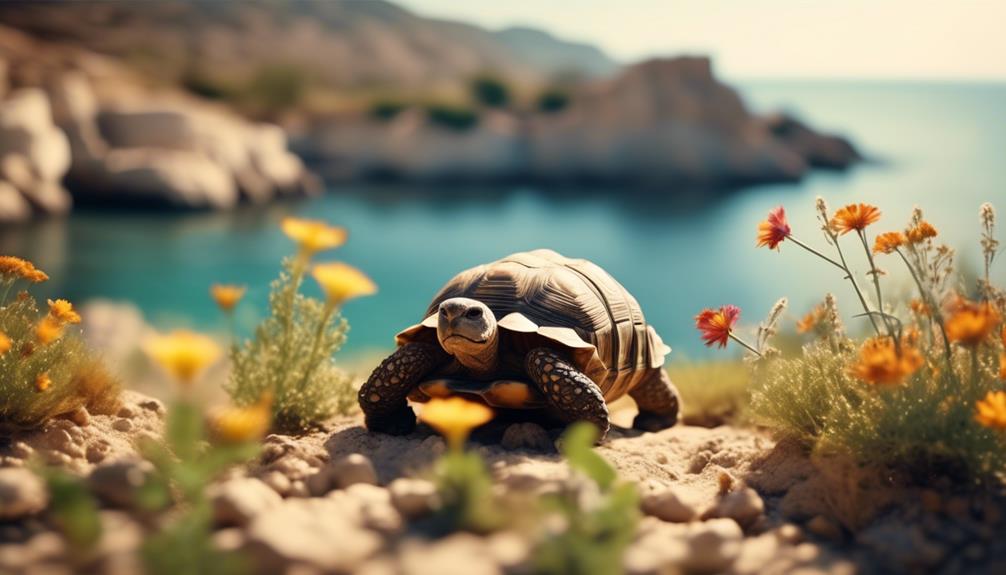
To provide the ideal environment for your Greek tortoise, it's important to ensure that the temperature, enclosure, and diet meet their specific needs. Here are some key factors to consider:
- Temperature: Maintain a minimum temperature of 80F for southern Greek tortoises and a basking area temperature of 95-100F. Northern Greek tortoises require a temperature range of 75-90F to allow for hibernation.
- Enclosure: Create an outdoor enclosure with plants and edible vegetation for them to graze on. Indoors, provide a tortoise table with a UVA/UVB light for adequate exposure to sunlight.
- Diet: Feed them a herbivorous diet consisting of weeds, dark leafy greens, natural hays and grasses, and occasional fruit. Offer a calcium supplement, such as cuttlebone, to promote healthy shell growth.
- Hydration: Provide a shallow water dish for soaking and drinking. Hydration is especially important for tortoises from arid environments.
Care Requirements for Greek Tortoises

To properly care for your Greek tortoise, it is essential to understand their specific care requirements. Here is a breakdown of what you need to know:
| Care Requirements | |
|———————————————-|————————————————————————————-|
| Diet | – Herbivorous diet of weeds, dark leafy greens, natural hays and grasses, and occasional fruit
- Commercial tortoise food in moderation
- Calcium supplement, such as cuttlebone |
| Hydration | – Shallow water dish for soaking and drinking
- Hydration is important, especially for tortoises from arid environments |
| Temperature | – Minimum temperature of 80F for southern Greek Tortoises
- Basking area temperature of 95-100F
- Temperature range of 75-90F for northern Greek Tortoises to allow hibernation |
| Housing | – Outdoor enclosure with plants and edible vegetation
- Indoor enclosure with tortoise table and UVA/UVB light |
| Native Habitat | – Grassland, rocky hillsides, forests, Mediterranean scrub land, meadows, fields, semi-desert environments, and coastal dunes
- Range includes Turkey, the Middle East, Sardinia, southern Spain, southwest Asia, and North Africa |
Important Considerations for Greek Tortoise Owners
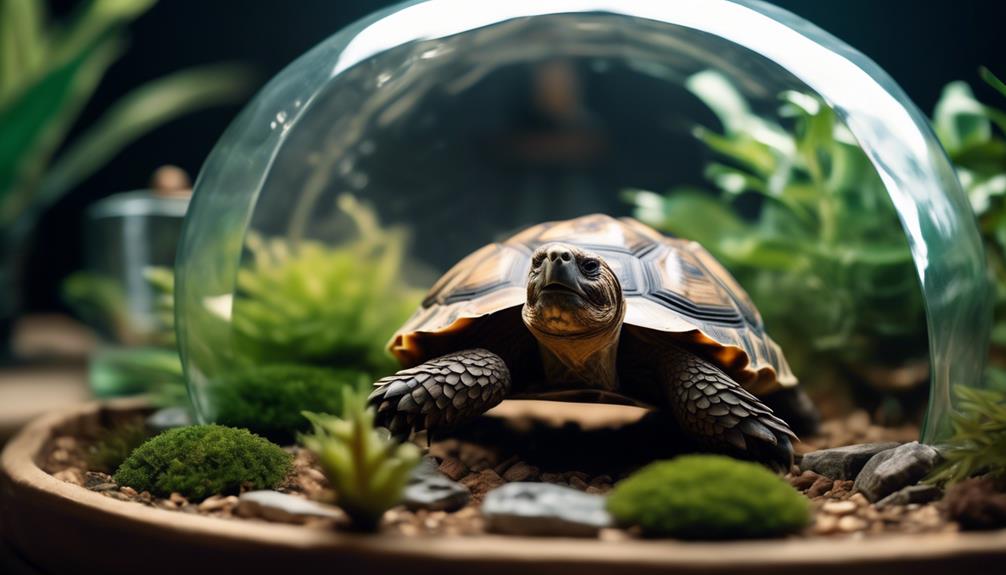
When caring for a Greek tortoise, it's crucial to consider certain important factors. Here are some key considerations to keep in mind:
- Knowledge: Understanding the physical characteristics, native habitat, and colors of the Greek tortoise will help you create a suitable environment for your pet.
- Environment: Providing the right temperature, both indoors and outdoors, is essential for the well-being of your tortoise. Additionally, creating an outdoor enclosure with plants and edible vegetation will mimic their natural habitat.
- Care Requirements: A proper diet consisting of weeds, dark leafy greens, natural hays and grasses, and occasional fruit is important for their nutrition. Including a calcium supplement and a shallow water dish for soaking and drinking will ensure their hydration needs are met.
Frequently Asked Questions
How Long Do Greek Tortoises Typically Live?
Greek tortoises typically live for a long time, with some individuals reaching 50-100 years. They require proper care, including a suitable diet, temperature, and housing, to ensure their longevity and well-being.
Can Greek Tortoises Swim?
Yes, Greek tortoises can swim. They are capable of moving through water using their legs and can stay afloat due to their buoyant shells. However, they are not strong swimmers and should be supervised.
Are Greek Tortoises Social Animals?
Greek tortoises are not inherently social animals. They are solitary creatures that prefer to live alone. However, they can tolerate the presence of other tortoises as long as they have enough space and resources.
How Do Greek Tortoises Defend Themselves From Predators?
Greek tortoises defend themselves from predators by using their hard, domed carapace as a shield. They can retract their head, legs, and tail into the shell for protection. Additionally, they have sharp spurs on their thighs that they can use to bite or scratch attackers.
Can Greek Tortoises Be Kept as Pets in Small Apartments or Houses?
Yes, Greek tortoises can be kept as pets in small apartments or houses. They require proper temperature, indoor or outdoor enclosures, a herbivorous diet, hydration, and calcium supplements.
What Makes the Russian Tortoise Different from the Greek Tortoise?
The fascinating world Russian tortoise is distinguished from the Greek tortoise by its smaller size and slightly different shell shape. While both species share similar behaviors and habitat preferences, Russian tortoises are known for their hardiness and ability to thrive in harsh, arid environments.
Conclusion
In conclusion, the Greek Tortoise is a fascinating and captivating creature. Its small size, highly domed carapace, and striking color variations make it a true wonder to behold.
By meeting their specific care requirements, such as providing a herbivorous diet and suitable enclosures with UVA/UVB lighting, we can ensure the well-being of these enchanting reptiles.
As we continue to unlock the secrets of the Greek Tortoise, we discover the magic that lies within their tiny, scaly frames.


